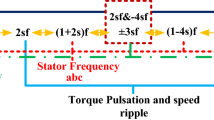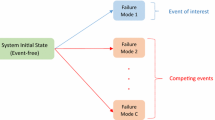Abstract
Machine fault prognosis techniques have been profoundly considered in the recent time due to their substantial profit for reducing unexpected faults or unscheduled maintenance. With those techniques, the working conditions of components, the trending of fault propagation, and the time-to-failure are precisely forecasted before they reach the failure thresholds. In this work, we propose the least square regression tree (LSRT) approach, which is an extension of the classification and regression tree (CART), in association with one-step-ahead prediction of time-series forecasting techniques to predict the future machine condition. In this technique, the number of available observations is first determined by using Cao’s method and LSRT is employed as a prediction model in the next step. The proposed approach is evaluated by real data of a low methane compressor. Furthermore, a comparative study of the predicted results obtained from CART and LSRT are carried out to prove the accuracy. The predicted results show that LSRT offers the potential for machine condition prognosis.
Similar content being viewed by others
References
C. S. Byington, M. Watson, M. J. Roemer, T. R. Galic and J. J. McGroarty, Prognostic enhancements to gas turbine diagnostic systems, Proc. of IEEE Aerospace Conference, Montana, USA (2003) 3247–3255.
J. Luo, M. Namburu, K. Pattipati, L. Qiao, M. Kawamoto and S. Chigusa, Model-based prognostic techniques, Proc. of IEEE Systems Readiness Technology Conference, New York, USA (2003) 330–340.
M. J. Roemer, C. S. Byington, G. J. Kacprzynski and G. Vachtsevanos, An overview of selected prognostic technologies with application to engine health management, Proc. of ASME, New York, USA (2006).
G. Vachtsevanos and P. Wang, Fault prognosis using dynamic wavelet neural networks, Proc. of IEEE Systems Readiness Technology Conference, Pennsylvania, USA (2001) 857–870.
R. Huang, L. Xi, X. Li, C. R. Liu, H. Qiu and J. Lee, Residual life prediction for ball bearings based on self-organizing map and back propagation neural network methods, Mechanical Systems and Signal Processing, 21 (2007) 193–207.
W. Q. Wang, M. F. Golnaraghi and F. Ismail, Prognosis of machine health condition using neurofuzzy system, Mechanical System and Signal Processing, 18 (2004) 813–831.
W. Wang, An adaptive predictor for dynamic system forecasting, Mechanical Systems and Signal Processing, 21 (2007) 809–823.
M. B. Kennel, R. Brown and H. D. I. Abarbanel, Determining embedding dimension for phase-space reconstruction using a geometrical construction, Physical Review A, 45 (1992) 3403–3411.
L. Cao, Practical method for determining the minimum embedding dimension of a scalar time series, Physical D, 110 (1997) 43–50.
L. Breiman, J. H. Friedman, R. A. Olshen and C. J. Stone, Classification and regression trees, Chapman & Hall (1984).
L. Torgo, A study on end-cut preference in least squares regression trees, University of Porto, http://www.liacc.up.pt/:_ltorgo (2008).
J. Yang and J. Stenzel, Short-term load forecasting with increment regression tree, Electric Power Systems Research, 76 (2006) 880–888.
V. T. Tran, B. S. Yang, M. S. Oh and A. C. C. Tan, Machine condition prognosis based on regression trees and one-step-ahead prediction, Mechanical Systems and Signal Processing, 22 (2008) 1179–1193.
A. Suárez and J. F. Lutsko, Globally optimal fuzzy decision trees for classification and regression, IEEE Trans. on Pattern Analysis and Machine Intelligence, 21 (1999) 1297–1311.
C. Huang and J. R. G. Townshend, A stepwise regression tree for nonlinear approximation: application to estimating subpixel land cover, International Journal of Remote Sensing, 24 (2003) 75–90.
D. S. Vogel, O. Asparouhov and T. Scheffer, Scalable look-ahead linear regression trees, Proc. of the 13th International Conference on Knowledge Discovery and Data Mining, California, USA (2007) 757–764.
R. Johansson, System modeling and identification, Prentice-Hall International Inc., USA, (1993).
Author information
Authors and Affiliations
Corresponding author
Additional information
This paper was recommended for publication in revised form by Associate Editor Eung-Soo Shin
Van Tung Tran is a lecturer at the Hochiminh City University of Technology in Vietnam. He received his B.S. and M.S. degrees in mechanical engineering from Hochiminh City University of Technology, Vietnam, in 1997 and 2003, respectively, and Ph.D. from Pukyong National University, South Korea in 2009. His research interests include machine fault diagnosis and condition prognosis.
Bo-Suk Yang is a professor at the Puyong National University in Korea. He received his Ph.D. degree in mechanical engineering from Kobe University, Japan in 1985. His main research fields cover machine dynamics and vibration engineering, intelligent optimum design, and condition monitoring and diagnostics in rotating machinery. He has published well over 190 research papers in the research areas of vibration analysis, intelligent optimum design and diagnosis of rotating machinery. He is listed in Who’s Who in the World, Who’s Who in Science and Engineering, among others.
Rights and permissions
About this article
Cite this article
Tran, V.T., Yang, BS. Data-driven approach to machine condition prognosis using least square regression tree. J Mech Sci Technol 23, 1468–1475 (2009). https://doi.org/10.1007/s12206-008-1218-7
Received:
Revised:
Accepted:
Published:
Issue Date:
DOI: https://doi.org/10.1007/s12206-008-1218-7




